As an Amazon Associate, we earn from qualifying purchases with no additional costs for you.
A Japanese kitchen knife is a long-term investment, so you should buy a knife that you will be comfortable using, especially if you have small hands. Are Japanese kitchen knives available for people with smaller hands? How do you select an appropriately sized knife?
An oversized knife can be cumbersome in the kitchen, causing hand fatigue and presenting safety problems for people with small hands. Japanese knives come in a range of blade sizes, allowing you to find a knife that is more suitable to your hand size than the standard knife sizes.
Small hands can be a problem when using kitchen cutlery designed for people with larger hands. The knife can be difficult to use or even dangerous if your hands are not big enough to control the knife effectively.
If you are interested in checking out the best Japanese knives (made by Hayate Yoshihiro) we recommend and use you can find them by clicking here (Amazon link).

Best Japanese Knife For Small Hands
Choosing the right size Japanese knife for your hand size is an important consideration when purchasing the knife.
People with smaller hands generally do not have hands that are as strong as people with larger hands. This has implications for the choice of knife for people with smaller-than-average hands.
Standard-sized knives are heavier due to the longer blades and bulkier handles. People with smaller hands may experience fatigue sooner when using a knife that is oversized for their hands.
The larger knife will also feel uncomfortable in your hand and will feel cumbersome when using it to process ingredients.
The potential fatigue and unwieldiness of using a knife that is too large for your hands is a recipe for disaster in the kitchen.
The knife can easily slip while you are using it, resulting in dangerous and deep cuts on your hands or fingers.
You will also be more likely to drop the knife or have it slip out of your hands and fall onto the floor or the hard work surface. The brittle nature of Japanese high-carbon steel can result in serious damage to the knife if it is dropped.
TIP: Each type of Japanese knife is designed and built with specific characteristics to fulfill a particular purpose in the kitchen. Find out all Japanese knife types explained in the article below:
All Japanese Knife Types Explained (Purpose, Usage & More)
How To Select A Japanese Knife For Small Hands
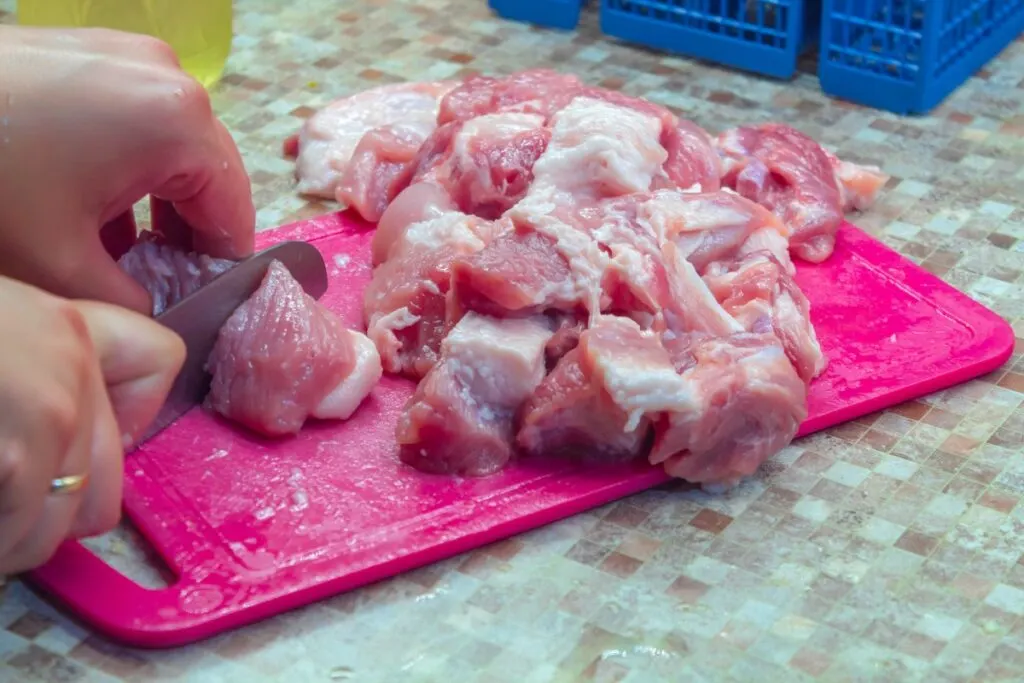
When selecting a knife, there are two main aspects to consider if you have small hands. Blade length and handle design are the two most important metrics when choosing a knife to fit your hand properly.
Most people are unaware that Japanese knives come in a range of blade lengths and handle designs, making it possible to choose a knife that best fits your hand.
The following lists some popular Japanese kitchen knives and their possible size variations.
- Gyuto. 7 inches to 14 inches or 180mm to 360mm blade length.
- Deba. 6 inches to 13 inches or 150mm to 330mm blade length.
- Nakiri. 4.7 inches to 9.4 inches or 120mm to 240mm blade length.
- Santoku. 5 inches to 8 inches or 127mm to 203mm blade length.
- Petty. 4.7 inches to 7 inches or 120mm to 180mm blade length.
Generally, when a knife is made with a shorter blade, the handle is shortened to accommodate the shorter blade and retain optimal balance in the knife.
The handle design on the Japanese knife is important for people with smaller hands. The best knife handle design is the traditional Wa-shape, a slender, tapered handle shape. The cross-section of the handle can be oval, D-shaped, or the more traditional octagonal shape.
The shorter the blade on the knife, the more scaled-down the handle design will be, making these knives the more appropriate choice if you have small hands.
Best Nakiri For Small Hands
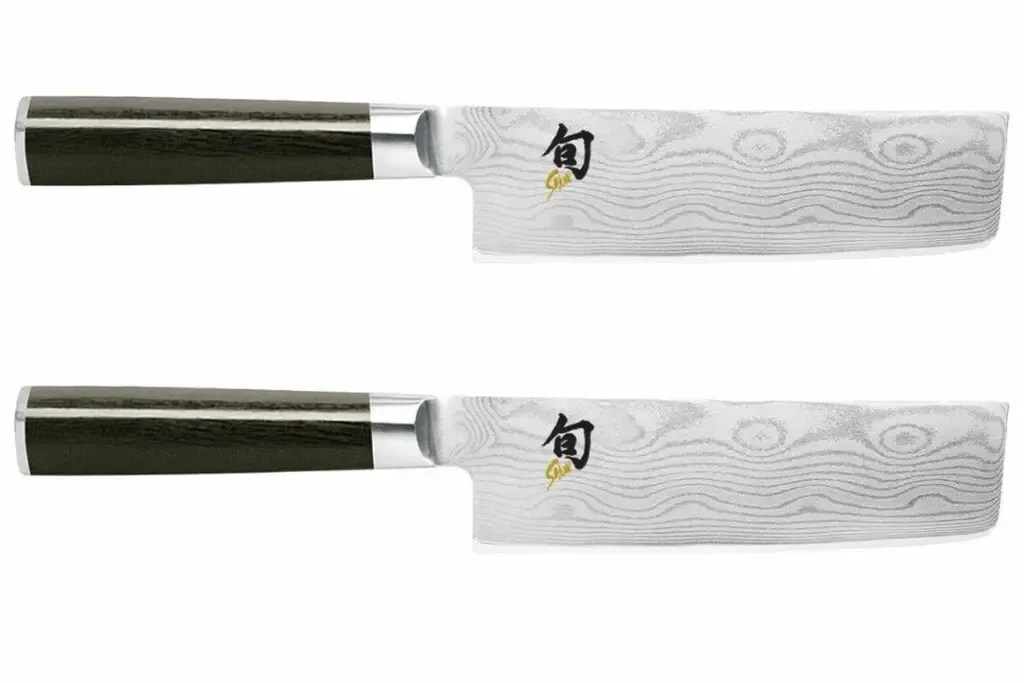
A Nakiri is a popular Japanese knife used for processing vegetables, herbs, fruit, and noodles. Our premium recommendation for a Nakiri for people with short hands is the Shun Cutlery Classic Nakiri.
Shun Cutlery is a respected manufacturer of quality Japanese kitchen knives, and this Nakiri is made to the high standards we have come to expect from this company.
The blade length on the Shun Cutlery Classic Nakiri (Amazon link) comes in at 6.5 inches, making it ideal for someone with smaller hands.
The Nakiri has a straight edge rather than a curved cutting edge, typical on most other knives. The straight cutting edge is ideal for simple push cuts and perfect for use on soft ingredients.
The core steel that makes up the cutting edge is VG-Max, which is covered in 68 layers of stainless steel to provide cladding for durability and beauty! The blade is double-beveled and has great edge retention.
The handle is a tapered D-shape made from Pakkawood and given an ebony finish. The handle is suitable for people with small hands and can be used by left or right-handed people.
TIP: Check out the article below if you want to see more options for affordable Nakiri knives:
4 Best Nakiri Knives For Your Kitchen Under $100 and $200
Best Santoku For Small Hands: Premium
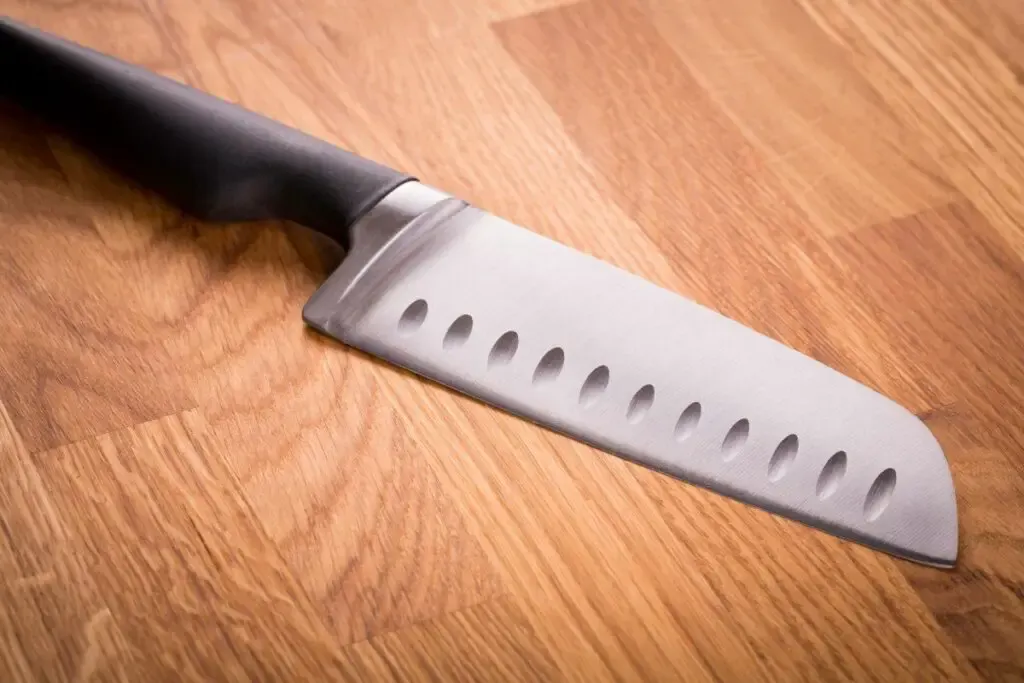
A Santoku is a small version of the multi-purpose Gyuto, or chef’s knife, making it a popular Japanese knife choice.
Yoshihiro is another well-known Japanese knife manufacturer producing authentic, quality Japanese kitchen knives.
The Yoshihiro Hammered Damascus Santoku (Amazon link) has a 7-inch or 180-mm blade made from 46 layers of VG-10 steel. The steel is hammered to give a textured look and to help prevent ingredients from sticking to the blade.
VG-10 is an excellent stain and corrosion-resistant steel, and when hardened to 60 HRC, as with this knife, it has great edge retention and can be honed to be super-sharp! The edge is double-beveled, making it easier to maintain and sharpen.
The handle is a traditional octagonal wa-handle, which is comfortable and balanced for people with smaller hands. Japanese Shitan Rosewood, a durable, beautiful wood, is used on the handle.
The Santoku comes with a traditional saya, or sheath, made from Magnolia wood which will protect the blade when not in use.
Best Deba For Small Hands: Budget
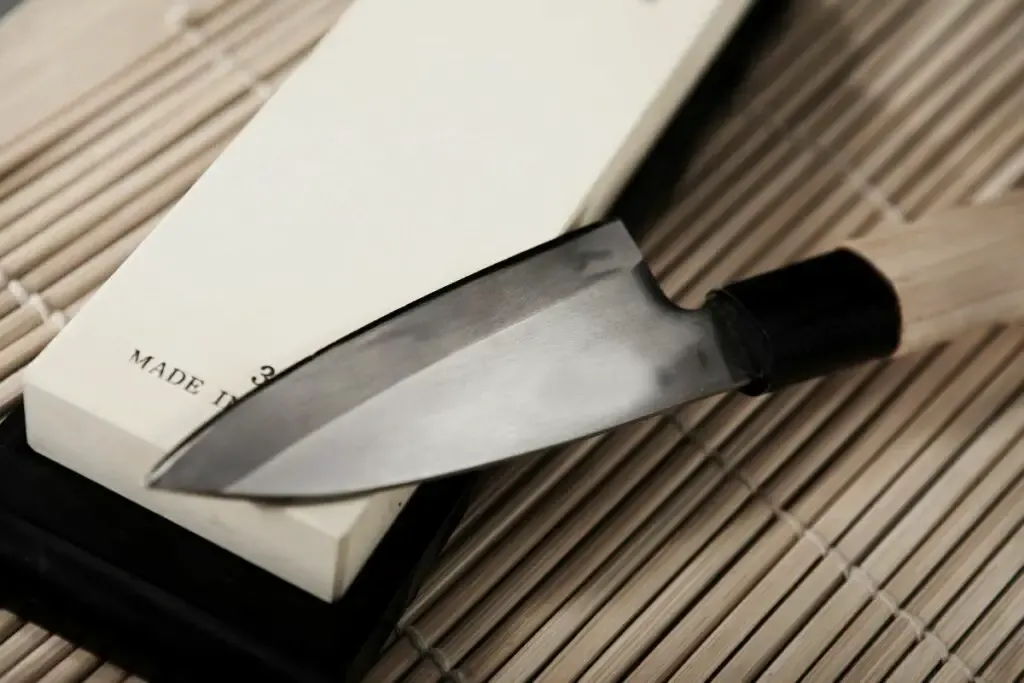
A Deba is designed to break down poultry, cut deboned meat, and clean and fillet fish. The blade on a Deba is traditionally between 6 and 13 inches, making this 7-inch blade perfect for people with smaller-sized hands!
The Yoshihiro White Steel Deba (Amazon link) has a blade made from Japanese high-carbon white steel, which is hardened to 62HRC. One aspect to be aware of is that this blade is a single-bevel blade, which can be more challenging to sharpen.
The handle is a traditional octagonal wa-handle made from Magnolia wood, as is the saya, or sheath. The traditionally shaped handle is comfortable and balances the knife well, giving an excellent knife-handling experience if you have small hands.
BTW: If you are interested in buying the best cutting board, you can find our recommendations below:
- The best overall: Virginia Kitchen Boys Cutting Board (Amazon link). This fantastic cutting board is made from sustainable walnut wood from the United States and brings almost perfect safety when cutting with your knives.
- Alternative: Yoshihiro Cutting Board (Amazon link). Professional traditional Japanese cutting board that chefs around the world use.
- Cheaper option: Shun Cultery Cutting Board (Amazon link). Another Japanese cutting board stands out, especially for its simplicity and affordable price.
FAQs About Japanese Knives for Small Hands
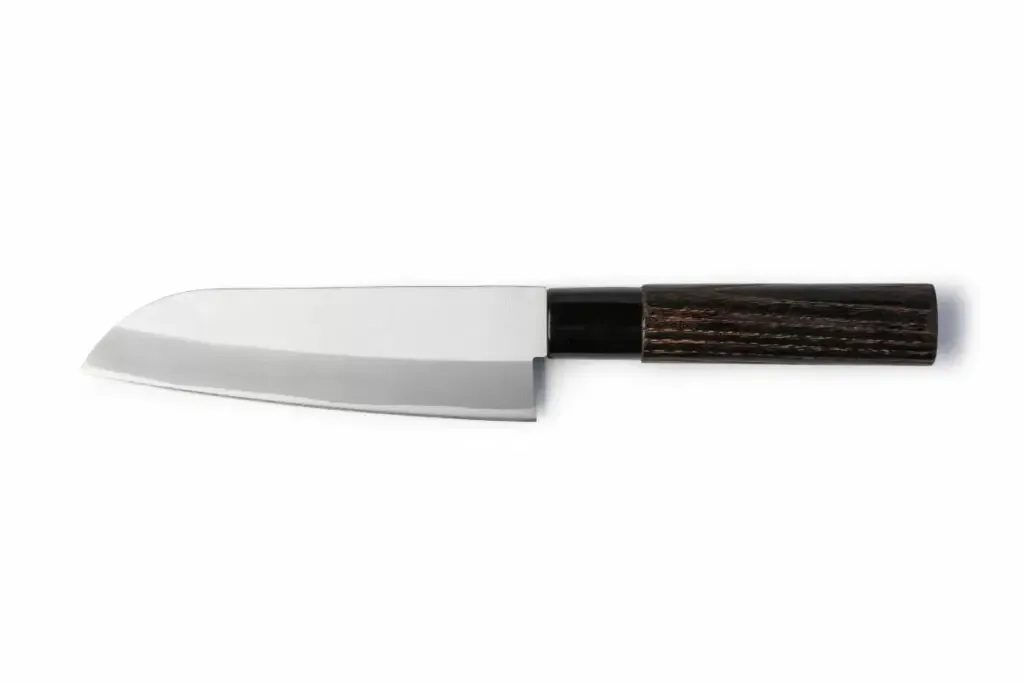
Q: What makes Japanese knives suitable for small hands?
A: Japanese knives are often designed with balance and precision in mind, making them more manageable for people with small hands. Features like shorter blade lengths, lighter weight, and ergonomic handles contribute to their suitability.
Q: How do I choose the right size knife for my small hands?
A: Consider the blade length and handle design. A blade length of 6 to 8 inches is often ideal for small hands. Look for handles that are slender and not too long, providing a comfortable grip without strain.
Q: Are there specific types of Japanese knives recommended for small hands?
A: Yes, types like the Santoku, Petty, and Nakiri are often recommended for small hands due to their compact size and versatile use in the kitchen.
Q: Can a Japanese knife be too light for effective cutting?
A: While lighter knives are easier to handle, especially for small hands, it’s important to find a balance. A knife that’s too light might not provide enough heft for certain types of cutting tasks. Opt for a knife that feels balanced and comfortable in your hand.
Q: How do I maintain and care for my Japanese knife?
A: Regular sharpening, proper cleaning, and dry storage are key. Avoid dishwashers as they can damage the blade and handle. Use a honing rod or whetstone for sharpening and store the knife in a block or sheath to protect the blade.
Q: Are there ergonomic handles designed specifically for small hands?
A: Yes, many Japanese knives feature ergonomic handles such as the Wa-shape, which is slender and can be more comfortable for small hands. Handles with an oval, D-shaped, or octagonal cross-section are also good choices.
Q: What should I avoid when using a Japanese knife with small hands?
A: Avoid using oversized knives as they can cause hand fatigue and be difficult to control. Also, be cautious with knives that have very long blades or heavy handles, which can be unwieldy.
Q: Can left-handed users find suitable Japanese knives for small hands?
A: Absolutely. Many Japanese knives are designed to be ambidextrous, and some specific models are tailored for left-handed users. Always check the product description to ensure compatibility.
Q: Is it worth investing in a premium Japanese knife for small hands?
A: Investing in a high-quality Japanese knife can be worthwhile due to its durability, precision, and comfort in use, especially for those with small hands. A good knife can last many years with proper care.
Q: Where can I purchase Japanese knives suitable for small hands?
A: Japanese knives can be purchased from specialty kitchenware stores, online retailers, and directly from manufacturers. Ensure you buy from a reputable source to guarantee authenticity and quality.
Conclusion
Standard knives and long-bladed knives can present a problem for people with short hands, which is why knives should be selected carefully if your hands are smaller than average.
The right-size Japanese knife is safer and more comfortable to use in the kitchen and will give you years of fatigue-free use!
TIP: A paring knife is one of the most useful knives in the kitchen, and it is suitable for people with small hands. Find out what to cut (and not to cut) with a paring knife in the article below:
Explained: What To Cut & NOT To Cut With A Paring Knife

